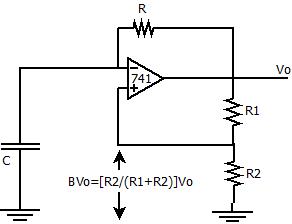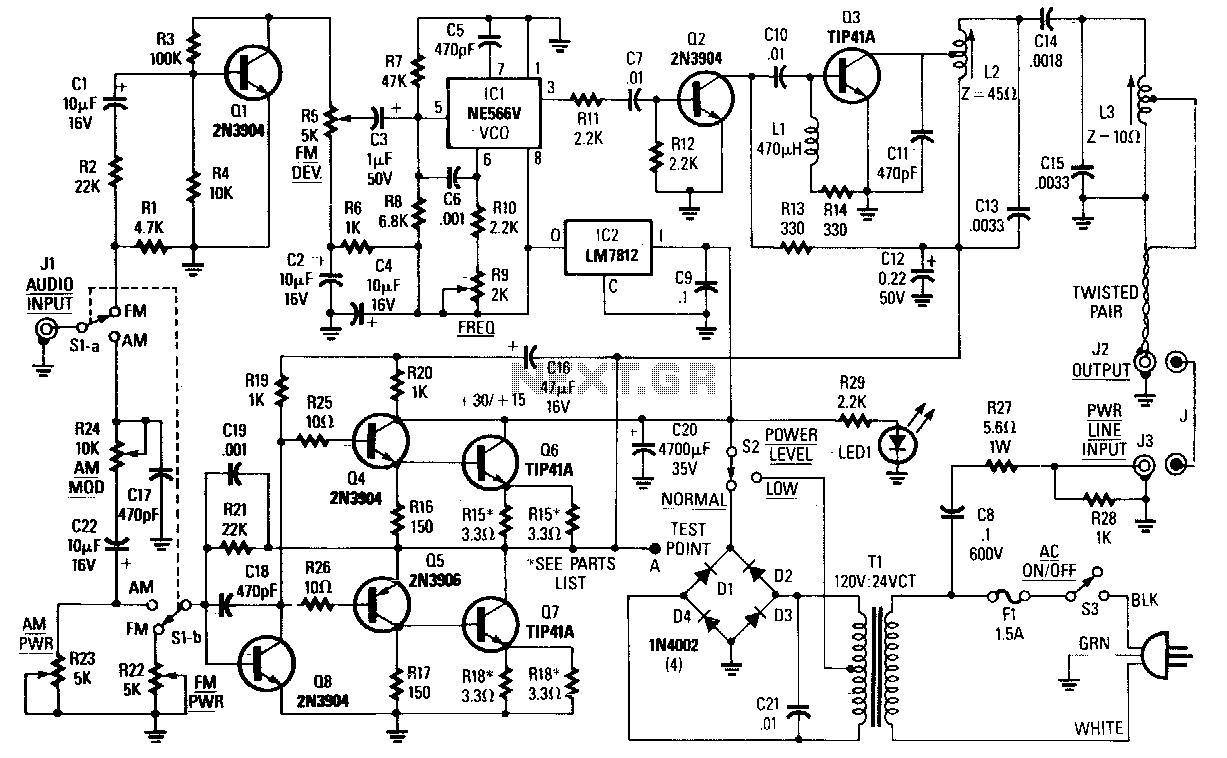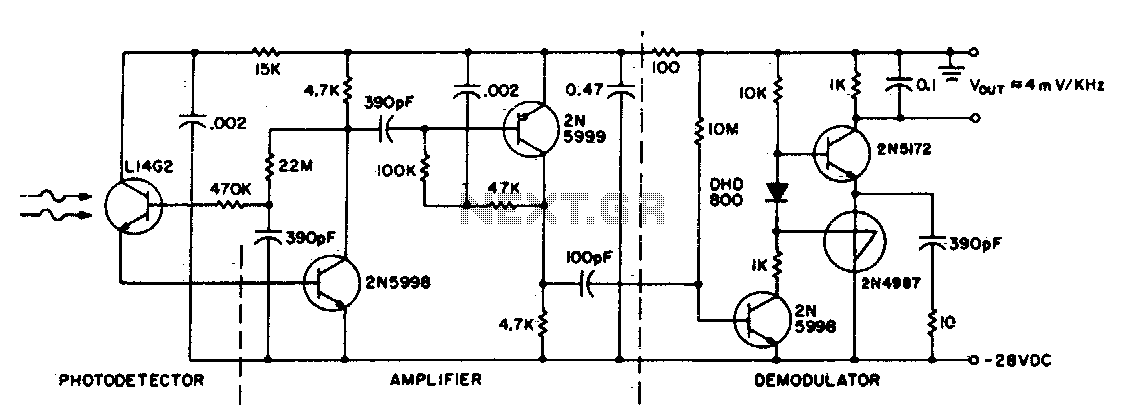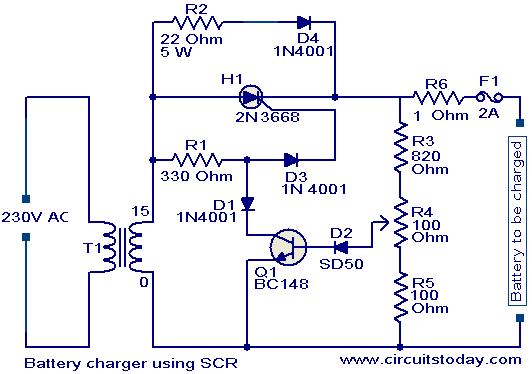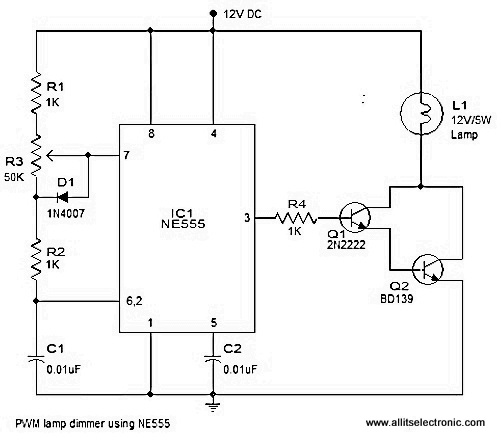
Stereo FM transmitter using BA1404
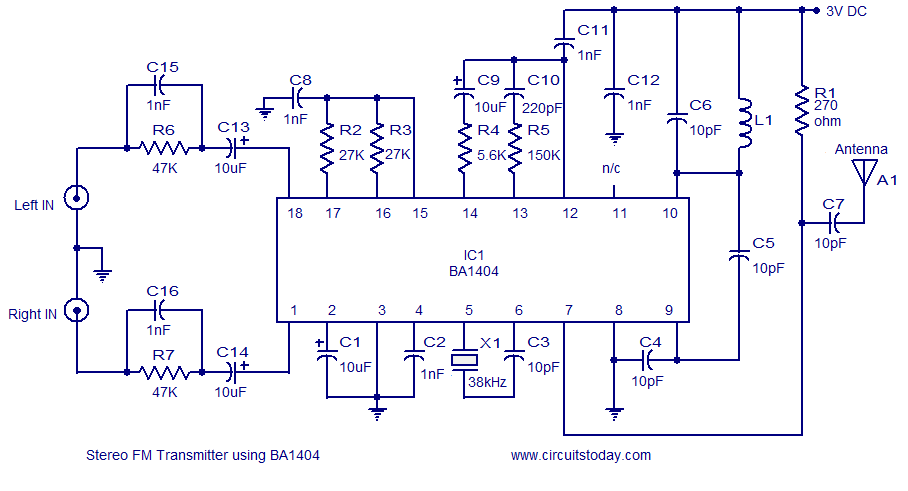
A high-quality stereo FM transmitter circuit is presented. This circuit utilizes the BA1404 integrated circuit from ROHM Semiconductors. The BA1404 is a monolithic FM stereo modulator that incorporates a stereo modulator, FM modulator, and RF amplifier circuitry. The FM modulator operates within a frequency range of 76 to 108 MHz, and the power supply for the circuit can range from 1.25 to 3 volts. In the circuit, components R7, C16, C14, and R6, C15, C13 form the pre-emphasis network for the right and left channels, respectively, to match the frequency response of the FM transmitter with that of the FM receiver. An inductor L1 and capacitor C5 are employed to set the oscillator frequency. The network consisting of C9, C10, R4, and R5 enhances channel separation. A 38 kHz crystal (X1) is connected between pins 5 and 6 of the IC, and a composite stereo signal is generated by the stereo modulator circuit using the quartz-controlled 38 kHz frequency.
The FM transmitter circuit designed around the BA1404 IC is engineered for high fidelity audio transmission within the FM band, specifically from 76 MHz to 108 MHz. The BA1404's integration of multiple functionalities allows for a compact design while maintaining performance standards. The pre-emphasis network, formed by resistors and capacitors (R7, C16, C14 for the right channel and R6, C15, C13 for the left channel), is critical in enhancing the audio quality by compensating for the inherent frequency response characteristics of FM receivers. This pre-emphasis is vital in reducing noise and distortion, particularly in the higher frequency ranges.
The oscillator circuit, consisting of inductor L1 and capacitor C5, is essential for generating the carrier frequency used in the transmission. The precise tuning of this oscillator ensures that the transmitted signal remains stable and within the desired frequency range. The additional network of capacitors (C9, C10) and resistors (R4, R5) plays a crucial role in improving channel separation, thereby minimizing crosstalk between the left and right audio channels. This is particularly important in stereo transmission, as it ensures a clearer and more distinct listening experience.
The use of a 38 kHz crystal oscillator (X1) connected to the BA1404 enhances the stability of the modulation process. This crystal-controlled frequency allows for accurate generation of the composite stereo signal, which is vital for maintaining sound quality and fidelity during transmission. The overall design of this FM transmitter circuit emphasizes the importance of component selection and configuration in achieving high-quality audio transmission while adhering to the power supply requirements of 1.25 to 3 volts. This adaptability makes the circuit suitable for various applications, including personal audio broadcasting and educational projects.A high quality stereo FM transmitter circuit is shown here. The circuit is based on the IC BA1404 from ROHM Semiconductors. BA1404 is a monolithic FM stereo modulator that has built in stereo modulator, FM modulator, RF amplifier circuitries. The FM modulator can be operated from 76 to 108MHz and power supply for the circuit can be anything betwee
n 1. 25 to 3 volts. In the circuit R7, C16, C14 and R6, C15, C13 forms the pre-emphasis network for the right and left channels respectively. This is done for matching the frequency response of the FM transmitter with the FM receiver. Inductor L1 and capacitor C5 is used to set the oscillator frequency. Network C9, C10, R4, R5 improves the channel separation. 38kHz crystal X1 is connected between pins 5 and 6 of the IC. Composite stereo signal is created by the stereo modulator circuit using the 38kHz quartz controlled frequency.
🔗 External reference
The FM transmitter circuit designed around the BA1404 IC is engineered for high fidelity audio transmission within the FM band, specifically from 76 MHz to 108 MHz. The BA1404's integration of multiple functionalities allows for a compact design while maintaining performance standards. The pre-emphasis network, formed by resistors and capacitors (R7, C16, C14 for the right channel and R6, C15, C13 for the left channel), is critical in enhancing the audio quality by compensating for the inherent frequency response characteristics of FM receivers. This pre-emphasis is vital in reducing noise and distortion, particularly in the higher frequency ranges.
The oscillator circuit, consisting of inductor L1 and capacitor C5, is essential for generating the carrier frequency used in the transmission. The precise tuning of this oscillator ensures that the transmitted signal remains stable and within the desired frequency range. The additional network of capacitors (C9, C10) and resistors (R4, R5) plays a crucial role in improving channel separation, thereby minimizing crosstalk between the left and right audio channels. This is particularly important in stereo transmission, as it ensures a clearer and more distinct listening experience.
The use of a 38 kHz crystal oscillator (X1) connected to the BA1404 enhances the stability of the modulation process. This crystal-controlled frequency allows for accurate generation of the composite stereo signal, which is vital for maintaining sound quality and fidelity during transmission. The overall design of this FM transmitter circuit emphasizes the importance of component selection and configuration in achieving high-quality audio transmission while adhering to the power supply requirements of 1.25 to 3 volts. This adaptability makes the circuit suitable for various applications, including personal audio broadcasting and educational projects.A high quality stereo FM transmitter circuit is shown here. The circuit is based on the IC BA1404 from ROHM Semiconductors. BA1404 is a monolithic FM stereo modulator that has built in stereo modulator, FM modulator, RF amplifier circuitries. The FM modulator can be operated from 76 to 108MHz and power supply for the circuit can be anything betwee
n 1. 25 to 3 volts. In the circuit R7, C16, C14 and R6, C15, C13 forms the pre-emphasis network for the right and left channels respectively. This is done for matching the frequency response of the FM transmitter with the FM receiver. Inductor L1 and capacitor C5 is used to set the oscillator frequency. Network C9, C10, R4, R5 improves the channel separation. 38kHz crystal X1 is connected between pins 5 and 6 of the IC. Composite stereo signal is created by the stereo modulator circuit using the 38kHz quartz controlled frequency.
🔗 External reference
